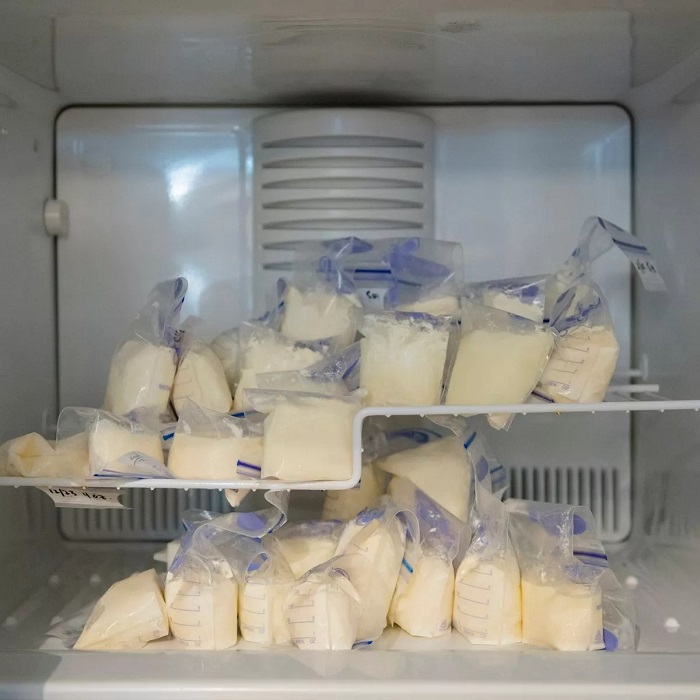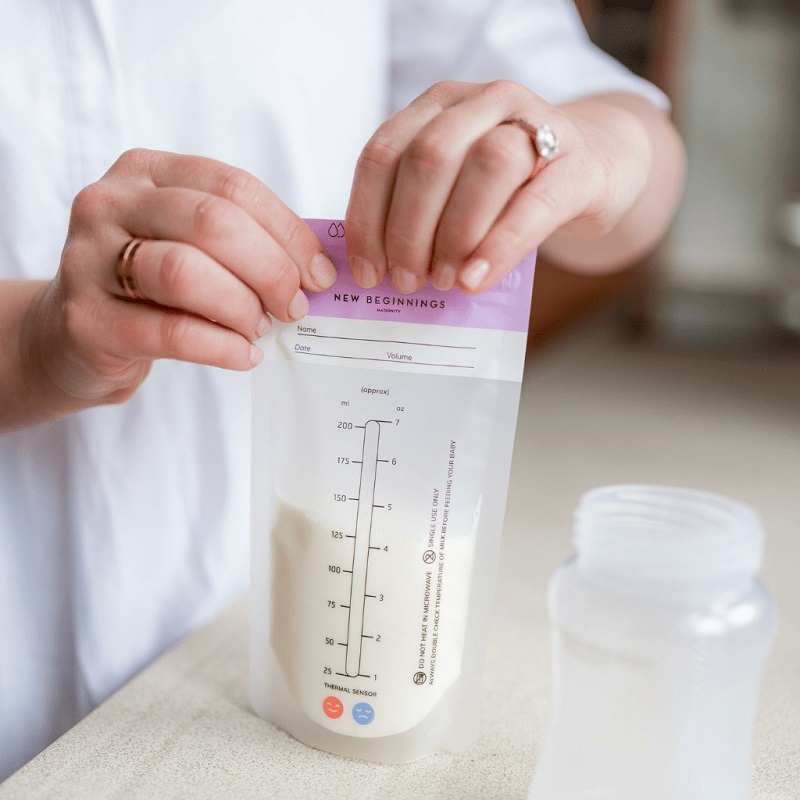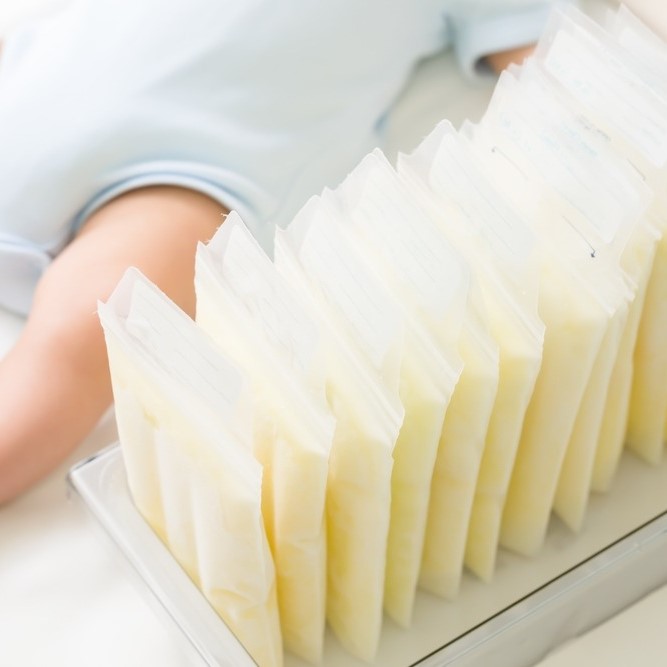Legal Considerations for Selling Breast Milk
When planning to sell breast milk, it’s critical to understand the legal landscape. Laws vary by region, and compliance is essential for a safe and lawful exchange.
Regulation and Safety Standards for Breast Milk Sales
To sell breast milk, one must adhere to strict safety standards. These rules ensure milk quality and safeguard the health of infants. In the U.S., the Food and Drug Administration (FDA) provides guidelines for human milk banking. While not all aspects of private milk sales are regulated, following these guidelines is advised. Seek out local milk banks for their protocols on screening and handling breast milk.
Understanding State Laws and Breast Milk Sharing
State laws regarding breast milk sales can differ greatly. Some states have specific statutes, while others may lack clear legislation. It’s crucial to research and comply with state-specific regulations. Additionally, consider consulting a lawyer to navigate any legal intricacies involved in breast milk sharing. This diligence helps protect both the seller and the infant recipient from potential legal issues and health risks.
Identifying a Target Market for Breast Milk
To sell breast milk effectively, identifying who needs it most is crucial. Generally, two main markets exist for donor milk: medical and private.
Demand for Donor Milk in Neonatal Intensive Care Units
Neonatal Intensive Care Units (NICUs) often require donor breast milk. This milk supports premature babies or those with medical conditions. It is especially vital for infants who cannot digest formula or whose mothers cannot provide milk. NICUs prefer milk that meets high safety standards due to the vulnerable health of their patients. Sellers should connect with hospitals and offer milk that aligns with medical requirements.
Private Sales and Online Marketplaces
In the private sector, parents through online marketplaces or social media often buy breast milk. These buyers might seek milk due to adoption, health issues, or personal preference. While selling to individuals, maintaining trust and transparency about milk quality is key. Online marketplaces and parenting networks can be ideal platforms to reach potential buyers. Sellers must ensure they follow safety guidelines as they would for NICU sales. They should also consider creating clear product descriptions to attract the right buyers.
Health and Screening Requirements for Sellers

To ensure the health of infants receiving donated breast milk, sellers must meet stringent health and screening requirements.
Mandatory Health Tests for Breast Milk Donors
Before selling breast milk, donors should undergo mandatory health tests. These tests typically include screening for infectious diseases such as HIV, syphilis, hepatitis B, and hepatitis C. Some milk banks or platforms may also require tuberculosis testing and drug screening. It’s crucial for donors to provide documentation of their test results to milk banks or buyers.
Maintaining a Healthy Diet and Lifestyle
Breast milk donors should maintain a healthy lifestyle to ensure the quality of their milk. A balanced diet, rich in fruits, vegetables, and lean proteins, is essential. Avoiding alcohol, tobacco, and certain medications is vital, as these can affect milk quality. Regular check-ups with a healthcare provider can help monitor the donor’s health status and provide guidance on diet and lifestyle choices.
Best Practices for Collecting and Storing Breast Milk
Maintaining the purity and safety of breast milk is vital for the well-being of the infants it nourishes. Whether you sell breast milk or donate it, follow best practices during collection and storage. This ensures the milk retains its nutritional value and is free from contamination.
Sterilization Techniques for Milk Collection
Keep all containers and pumps clean to avoid contamination. Use hot, soapy water or a dishwasher for thorough cleaning. Allow them to air dry on a clean towel. Before each use, sterilize breast pumps and containers by boiling for 5-10 minutes or using a steam sterilization bag. Clean your hands before handling any equipment or milk.
Proper Storage to Preserve Quality and Nutrients
Store breast milk in clean, BPA-free containers or special milk storage bags. Seal them well. Label each container with the date of expression. Keep the milk in the back of the refrigerator for up to 4 days. For longer storage, freeze it. Use the oldest milk first. When thawing, place the container in the fridge or a bowl of warm water. Do not refreeze breast milk once thawed. Follow these guidelines to safeguard the quality and nutrients of your breast milk while ensuring it remains safe for sale.
Setting the Price for Breast Milk
Setting the right price for breast milk is important. It must reflect various factors while being fair to buyers. Sellers must strike a balance. They aim to cover their efforts and costs, yet remain accessible to those in need.
Factors That Influence Breast Milk Pricing
Several elements can affect how sellers price breast milk. First, the cost of health tests and a healthy lifestyle can increase expenses. Storing and collecting supplies also contribute to the cost. The demand in the seller’s area can drive prices up or down. Milk with higher nutritional content or special diets may fetch a higher price. Lastly, prices can change based on the effort needed for packaging and shipping.
Pricing varies from place to place. Sellers should research local rates to set competitive prices. They should consider the affordability for different target markets too. A higher price may suit sales to certain marketplaces or private buyers. The aim is fair compensation without pricing out those in need.
Competitive Pricing Strategies
To establish competitive pricing, sellers need a strategy. One approach is comparing prices with other sellers. This helps to stay competitive in the market. Volume discounts can attract buyers needing larger supplies. Offering sample packs at a lower price can also intrigue new customers. It’s essential to review and adjust prices regularly. This ensures that they align with market demand and cost changes. Sellers should also clarify what their price includes. This could be screening costs, storage practices, or shipping. Transparency builds trust with buyers, which is valuable for ongoing sales.
In conclusion, when aiming to sell breast milk, pricing considerations are critical. By understanding and applying the right factors and strategies, sellers can ensure success and sustainability.
Packaging and Shipping Breast Milk
When you are ready to sell breast milk, packaging and shipping are key steps. They require careful attention to ensure that the breast milk arrives in optimal condition and maintains its integrity. It’s essential to follow best practices for sanitary packaging and to be aware of the regulations governing shipping human milk. Let’s discuss how best to navigate these aspects.
Ensuring Safe and Sanitary Transport
Safe transport is vital when selling breast milk. Begin with the right materials. Use insulated boxes and high-quality ice packs to keep the milk at a safe temperature. Before sealing the containers, make sure to wipe them down with food-grade sanitizers to prevent contamination. The packing process must be done in a clean, sanitized environment. To avoid any mishandling, label the package clearly as ‘Human Milk’. This informs handlers that the content requires gentle care and quick delivery.
Encourage buyers to choose expedited shipping options. This minimizes the time the breast milk is in transit. Offering tracking numbers helps both seller and buyer monitor the journey of the packages.
Regulations for Shipping Human Milk
Regulations for shipping human milk vary depending on location. It’s important to research and follow the rules that apply to your area. Some courier services have specific guidelines for shipping human milk. They may require you to follow certain protocols or fill out additional paperwork. Be aware that international shipments might be subject to customs regulations that can delay delivery. Always check with shipping providers for the latest and most relevant information.
In summary, when planning to sell breast milk, remember that packaging and shipping are just as important as any other step. Follow the safety guidelines, choose appropriate materials, and stay informed about the regulations to ensure a successful delivery.
Legal Agreements and Protecting Privacy

Navigating the sensitive nature of selling breast milk also means safeguarding the privacy of both parties. Drafting clear legal agreements and maintaining discretion in transactions are essential steps.
Drafting Agreements for Sale of Breast Milk
When selling breast milk, it’s vital to have a written agreement. This contract should spell out the terms, such as quantity, price, and delivery details. It should also cover how to resolve any disputes that may arise. Ensure that the agreement complies with local laws. It’s wise to have a lawyer review or help draft the document. The agreement should be signed by both the seller and buyer, confirming their understanding and consent.
Protecting Seller and Buyer Privacy in Transactions
Maintaining privacy in breast milk transactions is a must. Personal health information, contact details, and payment information must be handled with care. Sellers should anonymize packaging to protect identities. Digital transactions should be secure, using encrypted platforms to transfer funds. Both parties should agree on how to communicate and store personal data. To avoid potential data breaches, it’s necessary to use platforms that prioritize user privacy. Keeping transaction details confidential ensures trust and protects all involved.

In the era of digital commerce, it’s crucial to navigate online platforms and communities wisely. When you plan to sell breast milk, the internet offers numerous avenues, each with its benefits and challenges.
Selecting Reputable Platforms for Breast Milk Sales
Choosing the right online platform is key for successful breast milk sales. Look for platforms with strong safety protocols in place. They should have positive reviews and a history of secure transactions. Check each platform’s rules on selling human milk, as they must align with legal standards. It’s also important to gauge the platform’s user base to ensure you’re reaching the intended market. Some platforms specialize in connecting breast milk sellers to NICUs, parents, and milk banks, which can prove beneficial.
When you find a potential platform, examine the level of support they offer. Good platforms provide guidance for new sellers. They also help with setting up profiles and listings. Read through the terms and conditions. Ask questions if anything is unclear. Ensuring a match between your expectations and what the platform delivers is vital.
Remember to insert keywords that will attract your target market when creating listings. These keywords can include ‘safe breast milk’, ‘health screened milk’, or ‘nutrient-rich breast milk’, aligning with what buyers often search for.
Engaging with Online Communities and Support Networks
Besides sales platforms, engaging with online communities can be highly beneficial. Groups and forums exist where sellers and buyers meet to share experiences and support each other. They can offer valuable insights into pricing, legal considerations, and best practices.
Participation in these communities may provide a trust boost amongst potential buyers. Being active and helpful within communities shows commitment to safety and reliability. It creates connections that can lead to direct sales or referrals. Always be respectful and maintain privacy when engaging with others online.
Remember, networking and building a positive reputation in online communities takes time. Patient and consistent engagement can lead to a strong presence that supports your breast milk selling endeavours.
In summary, selecting reputable platforms and participating actively in online communities are essential for safely navigating the market when you sell breast milk. These steps help establish trust, reach potential buyers, and stay informed on the best practices and changes in the market.